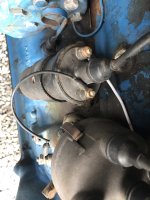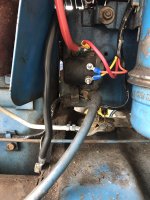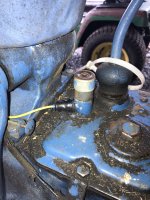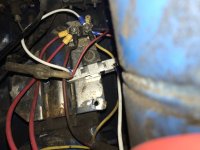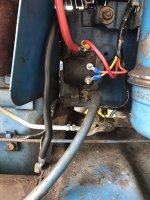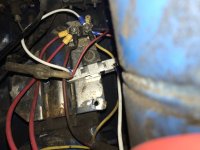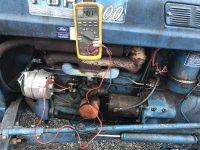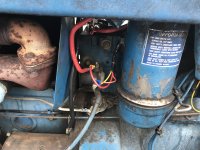lennyzx11
Veteran Member
- Joined
- Dec 20, 2015
- Messages
- 1,255
- Location
- Bennington Vermont
- Tractor
- Kubota L3301 HST/LA525 & 1964 Ford 2000 gas
After finding out I was going to have to replace the battery in my recently acquired 64 Ford 2000, I decided to go ahead and convert it to 12 volt.
There are numerous ways of doing this.
You can
1. Tweak the 6 volt regulator to have a 12 volt output or replace it with a 12 volt regulator. This only has a weak amp output though so may not keep battery charged. And it’s hard on the 6 volt generator field windings due to more heat from the higher voltage.
2. Farmer conversion. This is just throwing a 12 volt battery in it and recharging it occasionally back in the barn with a charger. Nothing else electrical will work and probably smoke if you turn it on.
Points may suffer burning and pitting rapidly also.
3. Rebuild the 6 volt generator and replace or rebuild the regulator to 12 volt specs. This is the best for a show off restoration and that generator is a lot more water resistant than an open framed alternator. Still will have lower amperage but probably plenty for a tractor’s system
4. And the most popular. Replace with a GM internally regulated alternator. 63 amps right out of the box, less than 100 bucks. And maybe 4 hours to do.
That’s what I did.
MORE COMING
There are numerous ways of doing this.
You can
1. Tweak the 6 volt regulator to have a 12 volt output or replace it with a 12 volt regulator. This only has a weak amp output though so may not keep battery charged. And it’s hard on the 6 volt generator field windings due to more heat from the higher voltage.
2. Farmer conversion. This is just throwing a 12 volt battery in it and recharging it occasionally back in the barn with a charger. Nothing else electrical will work and probably smoke if you turn it on.
Points may suffer burning and pitting rapidly also.
3. Rebuild the 6 volt generator and replace or rebuild the regulator to 12 volt specs. This is the best for a show off restoration and that generator is a lot more water resistant than an open framed alternator. Still will have lower amperage but probably plenty for a tractor’s system
4. And the most popular. Replace with a GM internally regulated alternator. 63 amps right out of the box, less than 100 bucks. And maybe 4 hours to do.
That’s what I did.
MORE COMING
